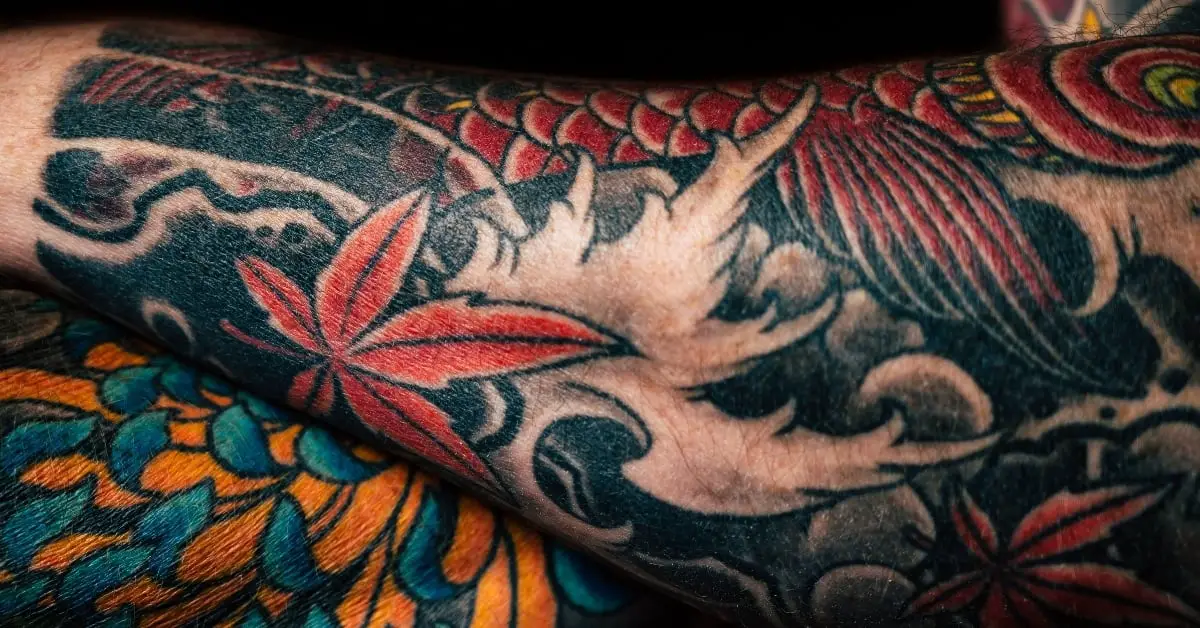Tattoo Scars are a common concern for those who appreciate ink. It’s essential to preserve the beauty and longevity of our body art. Sometimes, the journey to the perfect tattoo can be a bumpy ride! Whether during the inking process or the healing phase, our skin can go through severe trauma, resulting in an unwanted tattoo scar that can totally change the look of our beloved tattoo.
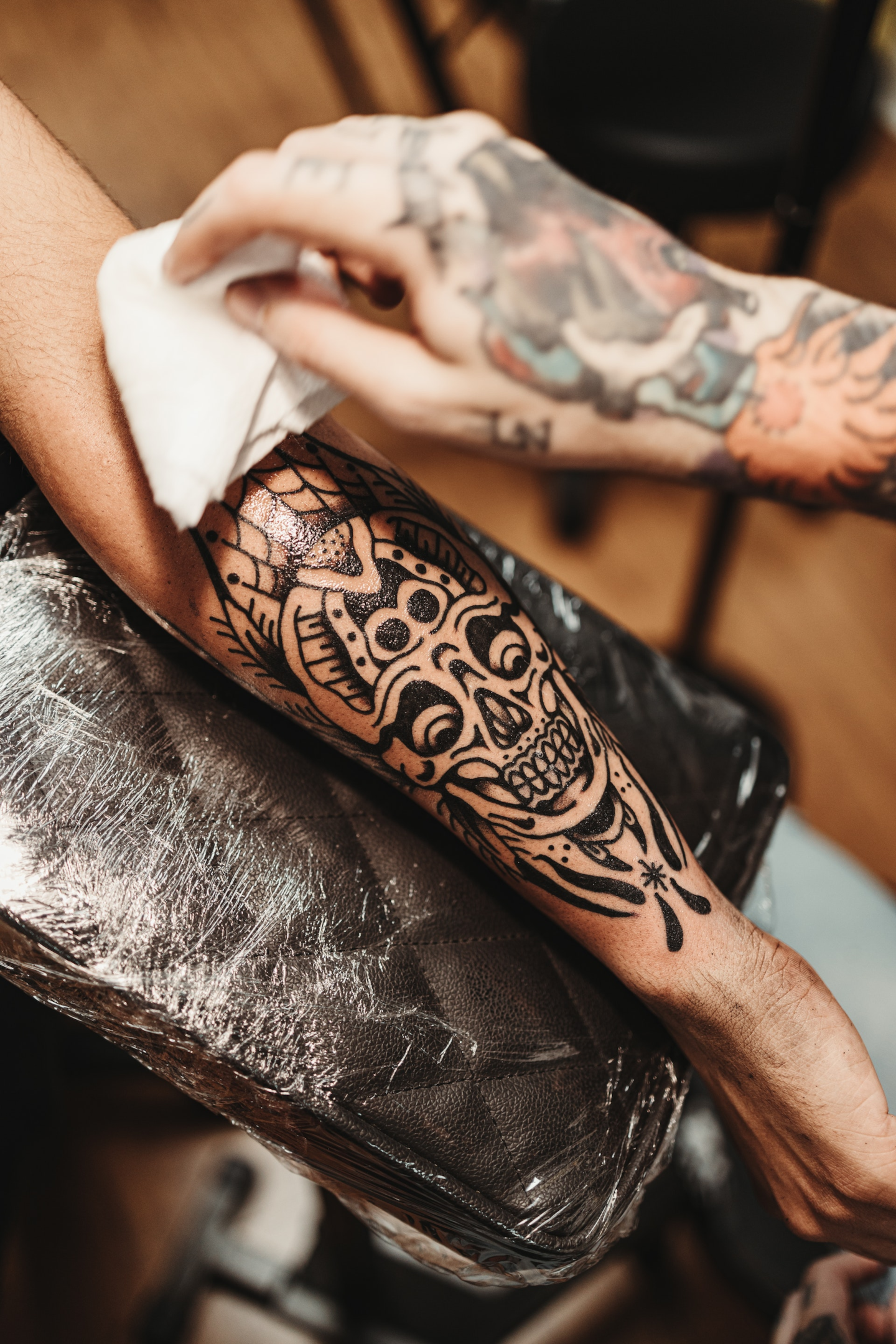
Getting a Tattoo involves using needles to enter the skin and inject ink into the dermis to produce the desired design. When done correctly, this process should result in minimal scarring; however, various factors, such as the depth of the needle entry, the types of ink used, and the individual’s healing process, as well as their skin’s unique response to the tattooing process, can all contribute to the formation of a tattoo scar.
It’s crucial to pick a top-notch, super-talented tattoo artist to avoid tattoo scars, as we all want to ensure our body art is on point and flawless. In that case, You need to understand the causes of tattoo scars and how we can minimize the risk of pesky scarring and maximize your overall satisfaction with your fabulous ink.
Trust me, it’s all about caring for tattooed skin and your art!
Causes of Tattoo Scarring
It’s important to remember that tattoo scarring can happen for many reasons, from the artist’s technique to how our unique skin reacts. I’ll break it down and discuss common causes that can lead to tattoo scarring, like infections.
1. Infection and Allergic Reactions
Infections caused by contaminated tattoo tools or an allergic reaction to tattoo ink can slow down or stop the healing process in a big way. Infections or allergic responses can cause inflammation, damaging tissue and leaving scars. To reduce the risk of infection during the tattooing session, it’s vital to ensure that the tattoo artist follows strict hygiene and sterilization rules.
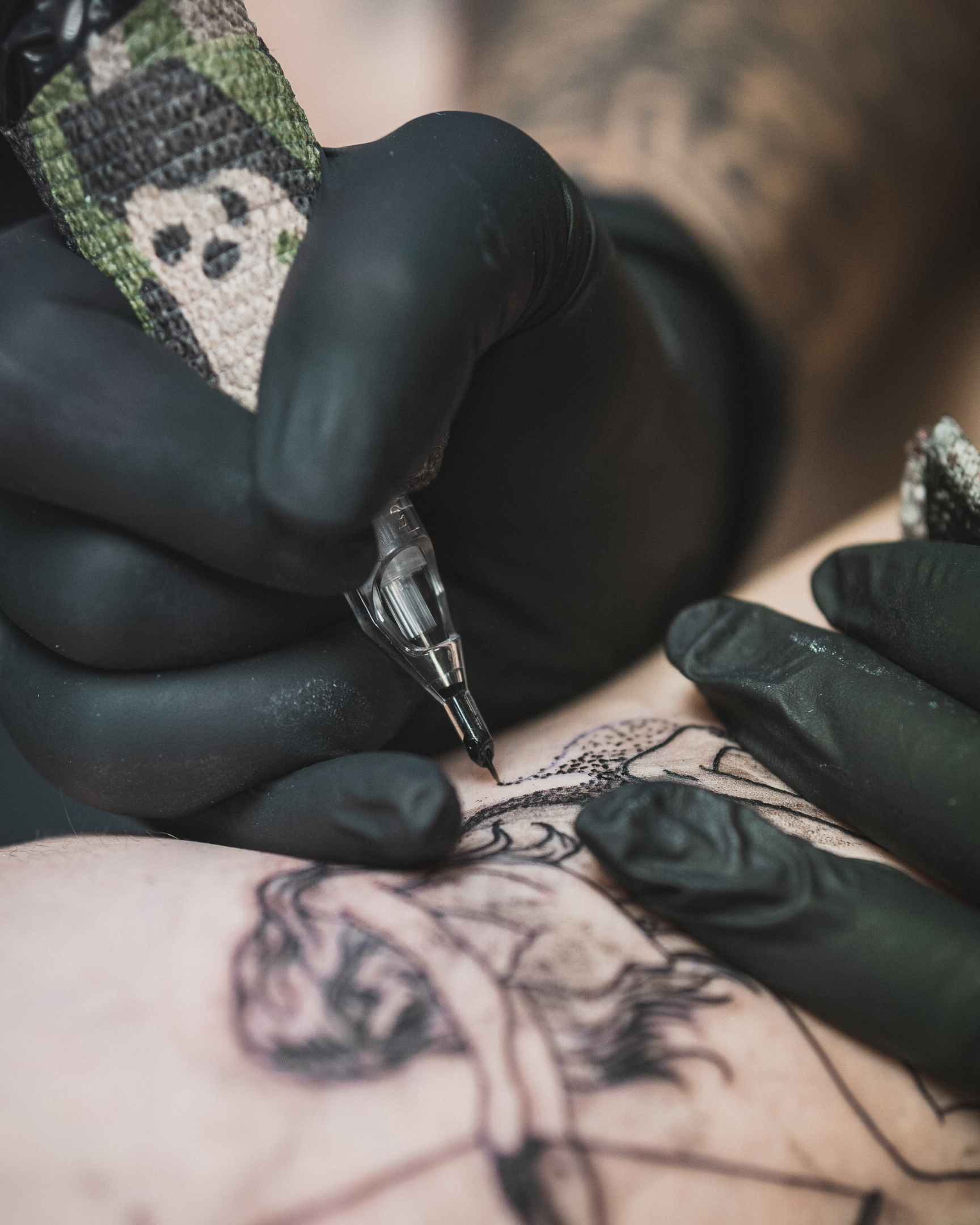
2. Inexperienced Tattoo Artists
The tattoo artist’s expertise is critical to the outcome of a tattoo. Artists who have yet to do a lot of tattooing may need to learn how to use the tools, change the needle depth, or apply the right amount of pressure during the process.
If the needle goes too far into the skin, it might cause scarring by damaging the underlying layers. Similarly, if the needle does not enter far enough, the tattoo may not heal evenly, giving it a scarred appearance.
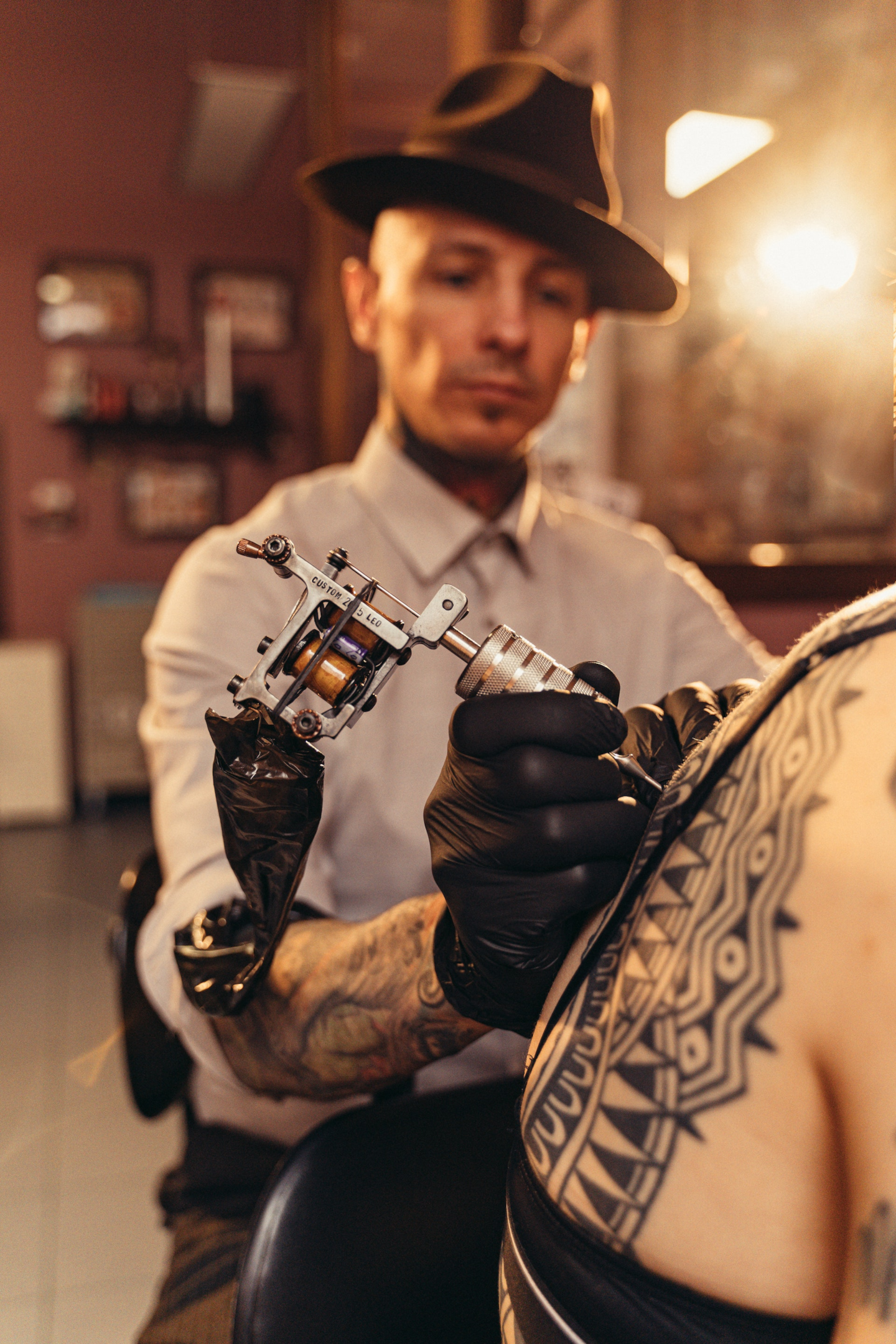
3. Poor Quality Tattoo Ink
The quality of the tattoo ink can cause scarring on your new tattoo. Some lower-quality inks may contain chemicals that irritate the skin and cause discomfort and scars. Most high-quality tattoo inks are made with colors that have been tested and are less likely to cause allergic reactions.
It’s all about understanding these causes so we can slay the game and minimize the risk of scarring. Let’s make sure our tattooing experience is nothing but fabulous and memorable.
Types and Appearance
Sometimes, despite our best intentions, the healing period doesn’t always go according to plan, and we might have some unwanted scars.
But fear not, because today I’m here to share some tips and tricks to help you navigate this situation like a pro! So, let’s dive right in and discover how to turn those scars into beautiful stories of resilience and self-expression!
1. Keloid Scarring
Keloid scars happen when too much tissue grows on healing tattoos during the healing process. This makes swollen and raised scars, often going beyond the area where the tattoo was. These marks can be very noticeable and can hurt or itch.
Keloid scars can look like anything from red to dark purple. Some things that can cause keloid scars are your genes, how tight your skin is, and getting an infection while your wound is healing.
2. Hypertrophic Scarring
Like keloid scars, hypertrophic scars are caused by the body making too much collagen as it heals, which makes the scars stand out. The most crucial difference between these two types of scars is that hypertrophic scars stay within the original tattoo’s borders.
Most of the time, they look like raised skin, thick red or pinkish lines. Most hypertrophic scars improve over time, but they may not completely disappear.
3. Atrophic Scarring
Atrophic scars have a flattened or sunken look because collagen or fat is lost while the wound is healing. This scarring usually makes the tattoo look faded or uneven, with a slight depression in the skin.
Even though atrophic scars aren’t as apparent as keloid or hypertrophic scars, they can still change how a tattoo looks. Atrophic marks are less likely to happen if you take care of yourself after the procedure and avoid infections.
4. Stretch Marks (Striae)
When tattoos are put on body parts that tend to stretch, like the belly or breasts, this can sometimes cause stretch marks. Stretch marks are created by fast skin stretching, which results in dermal tearing. If you have a tattoo in that spot, you may notice that the stretch marks have altered the ink’s pattern.
We all know tattoos are a fabulous way to express ourselves and showcase our unique style. But what happens when those gorgeous inked masterpieces meet some pesky scars? Well, my friends, the truth is that while some scars might gracefully blend in with our tattoo designs, others can be a bit more noticeable and impact the overall look of the tattooed area.
The absolute must-do is keeping your brand-new, stunning ink looking flawless: Prevention! It’s all about taking those crucial steps right from the start to ensure your gorgeous tattoo’s long-lasting health and beauty.

What Helps Prevent Scarring?
Preventing Tattoo Scars is all about setting yourself up for success, making intelligent choices, and giving your ink the love and care it deserves. I’ve got some essential measures you need to know about, so keep reading!
1. Choose a Skilled and Reputable Tattoo Artist
Finding a skilled and experienced tattoo artist is the first step to having a good tattoo experience. Please find out about local artists, look at their portfolios, and ask friends or people in online groups for suggestions. An artist with a recognized track record is more likely to use proper tattooing procedures, reducing the chance of scarring.
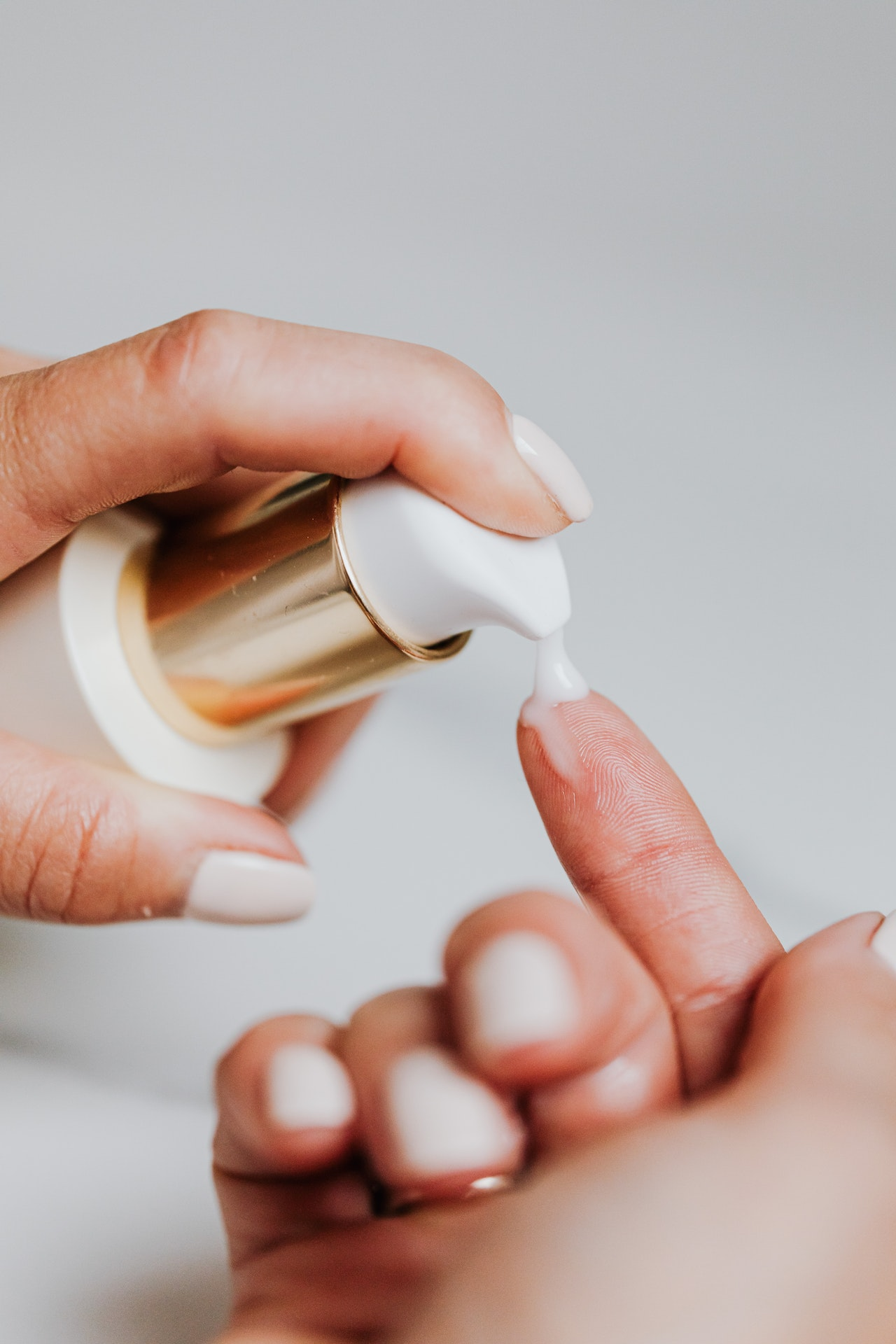
2. Proper Tattoo Care
After getting a tattoo, it is critical to properly care for it to avoid scarring and get a beautiful finish. Cleanse the affected area gently with mild soap, pat it dry, and apply the suggested scar ointment. Don’t pick tattoo scabs. Dress loosely to reduce friction and protect your tattoo from direct sun exposure.
To let it heal properly, avoid swimming until it is completely healed, remain hydrated, moisturize, and eat well. Reduce strenuous activities, listen to your artist’s advice, and attend follow-up appointments. These actions will aid in healing your tattoo, reducing the danger of scarring, and keeping your awesome body art looking its best.
3. Monitor and Address Infections Promptly
You should visit a doctor as soon as possible if you observe any signs of infection where you have a tattoo, such as increasing redness, swelling, pain, or discharge from the tattooed area. Infections, if not appropriately managed, can cause severe scarring.
Remember that everyone’s body reacts differently to tattooing and healing, so even with the best precautions, some scarring is always possible.
However, following these instructions and caring for your tattoo correctly increases the chances of a successful healing process and a tattoo that is an honor to your creativity without worrying about scars.
Treatment Options
It can be upsetting to deal with tattoo scars but advances in medicine and cosmetics have made it possible to treat them in many practical ways.
These methods are meant to reduce the look of scars, improve the skin’s structure, and improve the tattooed area. Here is a more in-depth look at some of the ways to treat tattoo scars:
1. Topical Treatments
- Silicone-Based Gels: These gels create a protective barrier over the scar, helping to hydrate the skin and regulate collagen production. Over time, silicone gels can reduce the scar’s visibility and texture.
- Vitamin E Creams: Vitamin E is known for its skin-nourishing properties. Applying vitamin E creams can help improve the appearance of scars by promoting skin cell regeneration and moisturization.
2. Corticosteroid Injections
- Corticosteroid injections are particularly effective for raised scars like hypertrophic scars and keloids.
- These injections help flatten the scar tissue and reduce redness, making the scar less noticeable.
- Multiple sessions may be required, and the effectiveness varies depending on the scar’s severity.
3. Laser Therapy
- Fractional Laser: This Laser treatment targets the scar tissue with laser beams, creating controlled micro-injuries to stimulate collagen production. This process gradually remodels the scar tissue, improving texture and appearance.
- Intense Pulsed Light (IPL): IPL treatments use light energy to break down scar tissue and stimulate skin rejuvenation. IPL can help reduce redness and pigmentation associated with scars.
4. Microdermabrasion and Chemical Peels
- Microdermabrasion: This procedure involves using fine abrasive particles to exfoliate the skin’s surface, removing dead cells and promoting skin cell turnover. Over time, microdermabrasion can improve scar texture and color.
- Chemical Peels: Chemical peels involve applying a solution that causes controlled exfoliation of the skin’s top layers. This can help reduce scar appearance and enhance overall skin texture.
5. Surgical Scar Revision
- In cases of severe scarring, surgical scar revision may be considered.
- The scar tissue is excised during this procedure, and the wound is meticulously closed using advanced techniques to minimize scarring.
- Surgical revision is often followed by additional treatments to optimize results.
6. Dermal Fillers
- Dermal fillers can be injected into depressed scars to raise them to the level of surrounding skin, creating a smoother surface.
- While this doesn’t remove the scar, it can significantly improve its appearance.
7. Microneedling
- Microneedling involves using a device with tiny needles to create controlled micro-injuries in the scar tissue.
- This process triggers the body’s natural healing response, promoting collagen production and improving scar texture.
8. Platelet-Rich Plasma (PRP) Therapy
- PRP therapy utilizes the patient’s blood to extract growth factors, which are injected into the scar area.
- Growth factors promote tissue regeneration and collagen production, leading to scar improvement.
Regarding those pesky scars, it’s all about finding the perfect treatment strategy tailored just for you!
By assessing your skin’s type, severity, and unique characteristics, the experts can recommend the most appropriate way to bid farewell to those unwanted marks.
These fantastic treatment options allow us to take charge of our skin’s destiny and say goodbye to those pesky scars. So get ready to slay because we’re about to unlock the secrets to a flawless complexion!
Tattoo Modifications
Sometimes, we just gotta make a change, am I right? Whether we’re not feeling the original design, dealing with some scars, or simply wanting to cover something up, there’s always a reason behind our decisions.
The two super popular tattoo modification methods are Scar Camouflage and Tattoo Removal. Let’s get ready to explore these game-changing techniques!
1. Scar Camouflage
Scar camouflage is a technique for hiding or blending scars with the surrounding skin by adding adjusted color to the scar tissue. This method is often used to hide scars left by injuries, surgeries, or old tattoos.
Scar camouflage tattoo artists have the skills and knowledge of color theory to make pigments that closely match the person’s skin tone. They carefully work on the scarred area to make it look smoother and less visible.
Scar makeup might not work for all types of scars or skin conditions, and some scars might need more than one session to get the results you want. Always consult a skilled tattoo artist or dermatologist to ensure the best action.
2. Tattoo Removal
Those who want to change their tattoos can also get them removed. The most frequent and efficient approach is laser tattoo removal, which uses light pulses focused on the tattoo ink particles in the skin. These waves break up the ink particles so the body can absorb them. This makes the tattoo fade over time.
Depending on the tattoo’s size, colors, and age, laser tattoo removal usually takes more than one treatment. Before the process, you should talk to a certified tattoo removal specialist to find out what to expect and if there are any risks.
Remember that laser tattoo removal works but might not eliminate the whole tattoo. It might leave minor marks or scars behind.
Concerning scar camouflage or tattoo removal, it’s all about doing your homework, consulting with the pros, and finding what suits your unique style and preferences. Remember, it’s all about making the best choice for YOU!
Final Thoughts
If you’re thinking about getting inked or already have fabulous tattoos, it’s super important to be aware of tattoo scarring, how to prevent it, and the various therapies available. Tattoo scarring can sometimes pose a little challenge on our journey to achieving that flawless, stunning tattoo look we all desire.
These scars might be raised, discolored, or different from what we had in mind. But fear not, fellow ink enthusiasts! Understanding the causes of tattoo scarring is the key! Making informed decisions and taking precautions to preserve your beautiful body art is essential.
You’ve got all the options, from topical and laser therapy to surgical scar modification. And guess what? Modern methods like dermal fillers and microneedling are totally slaying the game, too! Trust me, these alternatives are so varied and effective that you won’t even believe it!
Let’s keep our tattoos looking flawless!
